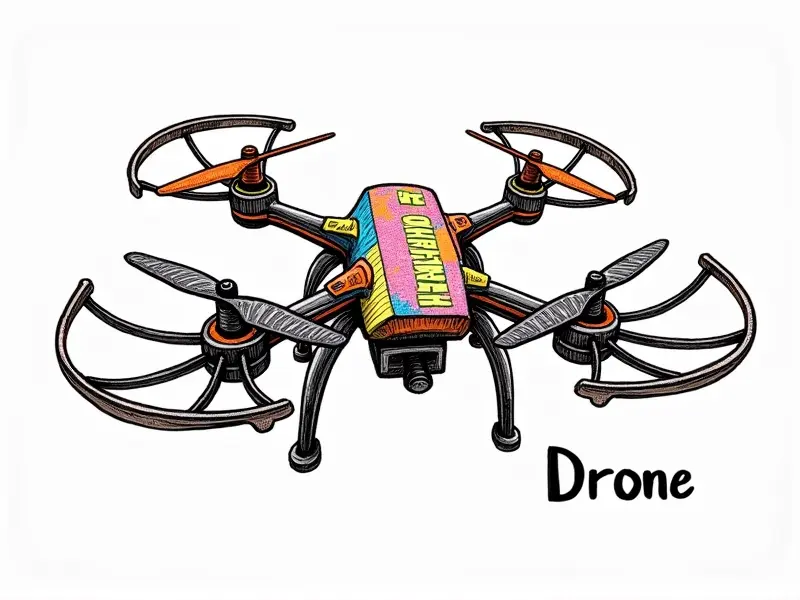Can a drone fly over 400 feet?

Is Flying Over 400 Feet Legal?
The legality of flying drones above 400 feet in the United States is a critical concern for drone enthusiasts and professionals alike. According to Federal Aviation Administration (FAA) regulations, operating a small unmanned aircraft system (UAS), commonly known as a drone, within the national airspace requires adherence to specific rules and restrictions.
The FAA's Part 107 regulations mandate that drones must not exceed an altitude of 400 feet above ground level when flying over people or unpopulated areas. This regulation is designed to ensure safety and prevent collisions with manned aircraft, which typically operate at higher altitudes.
Breaking the 400 Foot Barrier
The 400-foot ceiling poses a significant challenge for drone operators seeking to capture aerial footage or conduct surveys from greater heights. However, there are exceptions and alternative methods that can be employed to legally fly drones above this limit:
- Special Airspace Permits: Obtaining special airspace authorization allows drones to operate in specific areas above 400 feet for research or commercial purposes.
- Waivers and Certificates of Authorization (COA): The FAA may grant waivers under certain circumstances, enabling drone operators to fly beyond the standard altitude restrictions.
- Research and Development: Universities and private entities engaged in research can apply for permits to conduct experiments above 400 feet.
Can You Really Fly a Drone Above 400 ft?
The technical capabilities of modern drones allow them to fly far beyond the standard 400-foot limit. Many high-end models are equipped with advanced features such as GPS stabilization, obstacle avoidance sensors, and extended flight times that enable higher altitude flights.
However, achieving these heights legally requires compliance with FAA regulations and obtaining necessary permits or waivers. Unauthorized flights above 400 feet can result in fines and legal consequences, underscoring the importance of adhering to established guidelines.
Drones & FAA Rules: Over 400 Feet Allowed?
The FAA's regulatory framework is designed to balance innovation with safety concerns. While Part 107 regulations generally restrict drone operations to below 400 feet, there are provisions for higher-altitude flights under certain conditions:
- Special Operations: Drones can fly above 400 feet if they are part of a special operation approved by the FAA.
- Experimental Flights: Pilots conducting experimental or research flights may apply for exemptions to operate at higher altitudes.
The Sky's Limit: 400 Feet and Beyond?
The concept of a "sky's limit" is often associated with breaking boundaries, but in the context of drone operations, it reflects the regulatory constraints imposed by aviation authorities. While technically feasible to fly drones higher than 400 feet, doing so without proper authorization can lead to serious repercussions.
Drone operators must navigate these limitations carefully, ensuring compliance with all relevant regulations while pursuing their objectives. This balance is crucial for maintaining safety and fostering innovation within the drone industry.
Flying Limits for Drones Explained
The standard flying limit of 400 feet for drones serves multiple purposes:
- Safety: Preventing mid-air collisions with manned aircraft operating at higher altitudes.
- Visibility: Ensuring that drone operations are visible to pilots and air traffic controllers, enhancing situational awareness.
Navigating the 400 Foot Ceiling for Drones
Drone operators must carefully consider their operational needs and seek appropriate permissions when planning flights above 400 feet:
- Understand Regulatory Requirements: Familiarize yourself with FAA regulations and local airspace restrictions.
- Apply for Necessary Permits: Obtain special airspace authorization or waivers to legally conduct high-altitude flights.
Drone Altitude Limits Explained
The altitude limit of 400 feet is a cornerstone of drone regulations, but it can be circumvented through proper procedures and permissions. Understanding the nuances of these rules is essential for responsible drone operation:
- Regulatory Compliance: Adhere strictly to FAA guidelines to avoid legal issues.
- Innovative Solutions: Explore alternative methods, such as experimental flights and research permits, to achieve higher-altitude operations.
Maxing Out Your Drone's Flight Height
To maximize your drone’s flight height within legal boundaries, consider the following steps:
- Select High-Performance Models: Opt for drones with advanced features that support higher-altitude flights.
- Leverage Regulatory Flexibility: Utilize special permits and waivers to legally operate at greater heights when necessary.
Can Drones Really Fly Beyond 400ft?
The answer lies in the interplay between technological capabilities and regulatory compliance. While modern drones are technically capable of flying beyond 400 feet, doing so requires navigating a complex web of rules and obtaining necessary approvals:
- Technical Feasibility: High-end drone models can achieve higher altitudes with advanced features.
- Legal Compliance: Obtaining special permissions is essential to operate legally above 400 feet.
Pushing Your Drone's Altitude Limits
Pushing the boundaries of drone altitude requires a thorough understanding of regulatory requirements and innovative approaches. By adhering to established guidelines while exploring alternative methods, operators can achieve their objectives safely and legally:
- Regulatory Knowledge: Stay informed about FAA regulations and airspace restrictions.
- Innovative Approaches: Utilize special permits, waivers, and research exemptions to conduct high-altitude flights when needed.
Conclusion
Flying a drone above 400 feet is technically possible but legally complex. Understanding the regulatory landscape and obtaining necessary approvals are crucial steps for responsible operation. By adhering to FAA guidelines while leveraging innovative solutions, operators can maximize their drones' capabilities within legal boundaries.

